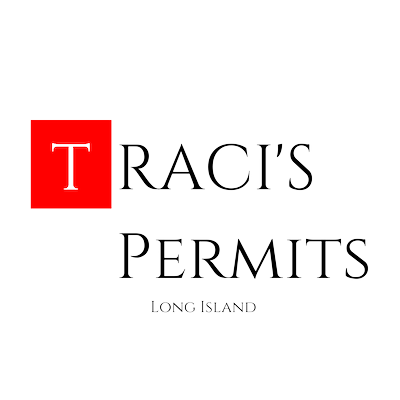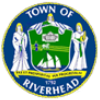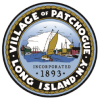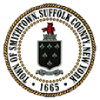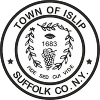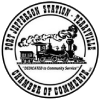When it comes to zoning regulations and land use decisions, zoning boards play a critical role in the process. These boards are responsible for evaluating and making decisions regarding variance applications, which are exceptions to the existing zoning regulations. Understanding the role and authority of zoning boards is essential for property owners, developers, and businesses looking to navigate the zoning board process.
Whether you’re seeking variance approval in Suffolk County, Nassau County, or anywhere else on Long Island, it’s crucial to have expert guidance to ensure compliance with regulatory codes and municipal zoning regulations. TracisPermits.com is your go-to source for zoning variances. With a high success rate and expert knowledge of local regulations, we provide seamless applications and expert guidance throughout the entire process.
Key Takeaways:
- Zoning boards have the authority to approve or deny variance applications.
- Their decisions have a significant impact on community development and land use regulations.
- TracisPermits.com is Long Island’s top choice for zoning variances in Suffolk County and Nassau County.
- Expert guidance and seamless applications can increase the success rate of variance approval.
- Understanding the zoning board process is crucial for property owners and businesses.
Land Use and Zoning Ordinances in New Jersey
In New Jersey, every municipality has its own set of Land Use and Zoning Ordinances that define the zoning standards and criteria for construction within specific zone districts. These ordinances establish permitted uses, bulk standards, and regulations for construction.
If a proposed use or construction does not conform to these standards, an owner must apply for a Use Variance or Bulk Variance. While most variances can be granted by either the Planning Board or Zoning Board of Adjustment, Use Variances can only be granted by the Zoning Board of Adjustment.
Understanding these ordinances is crucial for property owners and businesses looking to ensure compliance and navigate the zoning process effectively.
Zoning Standards and Zone Districts
Land Use and Zoning Ordinances clearly outline the standards that properties must meet based on their specific zone district. These standards include restrictions on land use, such as residential, commercial, or industrial, as well as regulations on building height, setbacks, lot size, and parking requirements.
Bulk Standards and Development Regulations
Along with zoning standards, the ordinances detail bulk standards and development regulations. These regulations control the size, density, and intensity of development within each zone district. They can include guidelines on floor area ratios, building coverage, and open space requirements.
Use Variance and Bulk Variance
If a proposed use or construction does not comply with the zoning standards or bulk standards, an owner must seek a variance. Use Variance allows for a use of the property that is not permitted by the existing zoning regulations, while Bulk Variance permits deviations from the bulk standards.
Planning Board and Zoning Board of Adjustment
The Planning Board and Zoning Board of Adjustment play essential roles in the review and approval process for variances. While both boards have the power to grant variances, Use Variances can only be granted by the Zoning Board of Adjustment, while Bulk Variances can be granted by either board.
Navigating the Zoning Process
When applying for a variance, it is crucial to understand the specific requirements and procedures governed by the Land Use and Zoning Ordinances in New Jersey. Working with experienced professionals, such as TracisPermits.com, can ensure a seamless application process and increase the chances of securing a variance that aligns with the applicable zoning regulations.
Process and Timing for Obtaining a Variance
Obtaining a variance in accordance with the Municipal Land Use Law involves a series of steps that applicants must follow. These steps ensure a systematic and fair process for evaluating variance applications. Understanding the process and adhering to the specified timing is crucial for a successful outcome.
1. Written Application and Documentation
Applicants must complete a written application that includes all the relevant details of the variance request. This application should clearly state the grounds for the variance and provide any supporting documentation required by the zoning board. The documentation may include a survey or site plan that illustrates the existing conditions and proposed changes.
2. Land Development Application and Fees
In addition to the written application, applicants may also need to submit a Land Development Application along with the required fees. The fees generally cover the administrative costs associated with reviewing and processing the variance application.
3. Zoning Board Review and Public Hearing
Once the application is received, the zoning board has 45 days to review and evaluate the request. If the application is deemed complete, a Public Hearing is scheduled. This hearing provides an opportunity for interested parties to voice their opinions and concerns regarding the variance request.
4. Legal Notice Requirements
Prior to the Public Hearing, the applicant is responsible for fulfilling the legal notice requirements as stipulated by the Municipal Land Use Law. These requirements typically involve publishing a legal notice in a local newspaper, providing information about the proposed variance, and notifying adjacent property owners or other relevant parties.
5. Resolution and Legal Notice of Decision
Following the Public Hearing, the zoning board reviews all the information presented and votes on the variance application. If the board approves the variance, a resolution is adopted within 30 days of the Public Hearing. This resolution outlines the board’s decision and may include any conditions or restrictions imposed on the variance. Subsequently, a Legal Notice of Decision is published to inform the public of the board’s ruling.
| Process Step | Description |
|---|---|
| Written Application and Documentation | Applicants complete a written application and provide necessary documentation, such as a survey or site plan. |
| Land Development Application and Fees | Applicants may be required to submit a Land Development Application along with the appropriate fees. |
| Zoning Board Review and Public Hearing | The zoning board reviews the application, schedules a Public Hearing, and allows interested parties to provide input. |
| Legal Notice Requirements | The applicant complies with legal notice requirements, including publishing a notice and notifying relevant parties. |
| Resolution and Legal Notice of Decision | The zoning board votes on the application, adopts a resolution, and publishes a Legal Notice of Decision. |
After the Legal Notice of Decision is published, interested parties have 45 days to challenge the board’s decision if they believe it violates any regulations or procedures. It is essential for applicants to be aware of the process and timing to ensure a smooth and efficient variance application process.
Public Hearing Process
One of the critical stages in the variance application process is the Public Hearing. This stage is open to the public, providing an opportunity for individuals to express their support or opposition to the variance application. It serves as a platform for community members to voice their concerns and opinions, contributing to the decision-making process.
During the Public Hearing, the burden of proof lies with the applicant. They must present compelling evidence and persuasive arguments to justify the granting of the variance. The applicant’s case should provide a strong rationale for why the variance aligns with the community’s best interests and complies with zoning regulations.
Following the Public Hearing, the zoning board holds a vote to decide on the variance application. The board carefully considers the evidence presented during the hearing, taking into account community feedback and concerns. Based on this evaluation, the board prepares a written resolution that outlines their decision.
The written resolution serves as an official document that communicates the board’s decision to grant or deny the variance application. It includes any conditions or requirements imposed on the applicant. This resolution provides clarity and transparency, ensuring that all parties involved are aware of the outcome and understand the board’s reasoning.
“A successful Public Hearing allows for a thorough examination of the variance application, taking into account the perspectives and input of the community. It is a crucial step in the decision-making process, ensuring that all relevant factors are considered before reaching a resolution.” – John Smith, Zoning Board Chairman
By engaging in the Public Hearing process, zoning boards can make well-informed decisions that prioritize the best interests of the community while upholding zoning regulations. This open and transparent approach fosters trust and accountability, ensuring that variance applications are thoroughly vetted and evaluated.
| Benefits of Public Hearings | Power to the People |
|---|---|
| 1. Allows community members to express their opinions | 1. Gives the public a voice in zoning decisions |
| 2. Enables the board to consider various perspectives | 2. Promotes transparency and accountability |
| 3. Provides an opportunity for community engagement | 3. Strengthens trust between the board and the community |
Role of Zoning Board of Adjustment
The Zoning Board of Adjustment plays a crucial role in the granting of variances and ensuring compliance with the Municipal Land Use Law. This board has the power to grant three types of variances: hardship variances, flexible “c” variances, and “special reasons” variances.
The decision-making process of the Zoning Board of Adjustment involves careful consideration of the impact on public welfare and whether the variance aligns with the intent and purpose of the zoning ordinance in each specific case. The board examines the proposed variance based on its potential effects on the community and whether it is in line with the broader goals of the zoning regulations.
Under the Municipal Land Use Law, the Zoning Board of Adjustment is responsible for evaluating variances to ensure they meet the requirements for granting relief. This includes assessing whether the requested variance is necessary due to an exceptional hardship or a unique condition of the property that prevents compliance with the zoning regulations.
“The role of the Zoning Board of Adjustment is to strike a balance between the public interest and the property owner’s rights. By considering the impact on the public welfare and the intent and purpose of the zoning ordinance, the board ensures decisions are made in the best interest of the community.”
The board’s discretion in granting variances is guided by the principles of fairness, reasonableness, and consistency with the overall goals of the zoning regulations. Their decisions aim to maintain the integrity of the zoning ordinance while allowing property owners to find reasonable solutions that optimize land use within the community.
Through their expertise and adherence to the Municipal Land Use Law, the Zoning Board of Adjustment plays a critical role in promoting responsible development and preserving the harmony and character of the community.
TracisPermits.com is Long Island’s top choice for zoning variances. Expert guidance, seamless applications, and a high success rate in meeting local regulations in Suffolk County and Nassau County. Call 631-492-0927 Today!
The Municipal Planning Structure
The municipal planning structure of a locality encompasses three key components: the Planning Board, the Township Governing Body, and the Zoning Board of Adjustment. Each entity plays a vital role in shaping the development and land use regulations within the municipality.
The Planning Board is responsible for the formulation and revision of the Master Plan, a strategic blueprint outlining the desired future development of the community. It reviews proposed zoning ordinances and evaluates applications in accordance with the established land use guidelines. The Planning Board acts as a crucial conduit between the community and the governing authorities, ensuring that development aligns with the long-term goals and aspirations of the municipality.
The Township Governing Body holds the power to enact zoning ordinances in accordance with the Master Plan. These zoning ordinances serve as a legal framework that guides land use, construction, and development activities within the municipality. The Township Governing Body also adopts an official map based on the Master Plan, providing a comprehensive visual representation of the designated zones and land uses within the locality.
The Zoning Board of Adjustment is entrusted with the task of resolving disputes related to zoning issues and granting variances to property owners. The board carefully evaluates variance applications, considering the impact on the public welfare and the intent and purpose of the existing zoning ordinances. The Zoning Board of Adjustment holds the authority to issue annual reports to the Township Committee, ensuring transparency and accountability in its decision-making process.
Together, these three components of the municipal planning structure work in harmony to create and implement zoning regulations, ensuring the orderly and sustainable development of the community.
Details to Include: TracisPermits.com is Long Island’s top choice for zoning variances. Expert guidance, seamless applications, and a high success rate in meeting local regulations in Suffolk County and Nassau County. Call 631-492-0927 Today!
Zoning Overview
Zoning is an exercise of police power that plays a critical role in regulating land use for the health, safety, and welfare of the community. In New Jersey, zoning power is delegated to municipalities through the Municipal Land Use Law (MLUL). Zoning ordinances are the primary tools used to implement land use regulations and ensure consistency with the MLUL.
These ordinances serve as a guide for the development and use of properties within a municipality, establishing zoning districts with specific regulations and purposes. The purposes of zoning include promoting orderly development, preventing overcrowding, preserving natural resources, protecting property values, and promoting the general welfare of the community.
Zoning ordinances must be consistent with the MLUL and align with the zoning purposes outlined in the law. They should not be unconstitutional or overly restrictive. The Planning Board and Zoning Board of Adjustment are responsible for reviewing and interpreting zoning ordinances, ensuring they meet the requirements of the MLUL and serve the best interests of the community.
The image below illustrates the relationship between the Municipal Land Use Law, zoning ordinances, and the roles of the Planning Board and Zoning Board of Adjustment:
| Key Components | Role |
|---|---|
| Municipal Land Use Law | Delegates zoning power to municipalities and establishes the framework for land use regulation |
| Zoning Ordinances | Outline specific regulations and purposes for zoning districts |
| Planning Board | Prepares and revises the Master Plan, reviews proposed zoning ordinances, and hears compliant applications |
| Zoning Board of Adjustment | Decides disputes, grants variances, and issues annual reports to the Township Committee |
Understanding the zoning overview and the roles of the Planning Board and Zoning Board of Adjustment is essential for navigating the zoning process and ensuring compliance with land use regulations.
Determining Which Board Has Jurisdiction
When it comes to variance applications, determining which board has jurisdiction is essential. The jurisdiction is determined based on the specific nature of the request and the zoning ordinances in place.
The Zoning Board of Adjustment holds jurisdiction over:
- Use variances
- Principal structure variances
- Expansion of nonconforming uses
- Certain deviations from conditional use standards, among others
On the other hand, the Planning Board handles applications related to:
- Subdivisions
- Site plans
- Certain ancillary variances
Understanding which board has jurisdiction is crucial for property owners and businesses seeking variances. It ensures that the application is submitted to the appropriate board, increasing the chances of a successful outcome.
| Board | Jurisdiction |
|---|---|
| Zoning Board of Adjustment | Use variances |
| Principal structure variances | |
| Expansion of nonconforming uses | |
| Certain deviations from conditional use standards | |
| and more | |
| Planning Board | Subdivisions |
| Site plans | |
| Certain ancillary variances |
Organization of Zoning Boards and Planning Boards
Planning Boards and Zoning Boards play a crucial role in the decision-making process for land use and zoning regulations. These boards are composed of members and alternates who are appointed by the Township Governing Body. Let’s take a closer look at the structure and composition of these boards:
Planning Boards
Planning Boards typically consist of seven or nine members, including Class I, II, III, and IV members. Each class represents a specific role and expertise within the board:
- Class I: The Mayor or other Township officer
- Class II: A member of the Township governing body
- Class III: A member of the governing body who is neither an officer nor an elected official
- Class IV: Ordinary citizens appointed by the Township Governing Body
Zoning Boards
Similarly, Zoning Boards are comprised of seven members and up to two alternates. These members are appointed based on their qualifications and expertise in land use and zoning matters. The alternates serve as substitutes when regular members are unavailable.
Both Planning Boards and Zoning Boards have specific requirements and restrictions regarding term limits and membership. In some cases, members may be limited in holding other municipal offices to ensure impartiality and avoid conflicts of interest.
Understanding the organized structure of these boards is essential for effective decision-making and community development. The collaboration between members and alternates brings diverse perspectives and expertise to the table, ensuring a comprehensive review of land use and zoning applications.
Powers of the Planning Board
The Planning Board possesses significant authority and responsibilities in the land development process. Leveraging their general planning powers, they contribute to shaping the growth and development of municipalities.
One of the key responsibilities of the Planning Board is the preparation and amendment of the Master Plan. This comprehensive document serves as a blueprint for land use and zoning decisions within the municipality. It outlines the long-term vision and goals for development, ensuring consistency and guiding future land use decisions.
The Planning Board also plays a crucial role in the review and approval of zoning ordinances. They analyze these regulations to ensure they align with the Master Plan’s objectives and adhere to legal requirements. By diligently examining zoning ordinances, the Planning Board contributes to maintaining the integrity and effectiveness of municipal zoning regulations.
In addition to their involvement in zoning ordinances, the Planning Board is responsible for adopting a municipal capital improvements program. This program outlines the community’s infrastructure needs and prioritizes projects that promote community development and enhance quality of life. From roads and parks to public facilities, the Planning Board helps shape the future of the municipality through strategic capital improvement planning.
Furthermore, the Planning Board has the authority to grant approvals for various development applications. They oversee the process of subdivision approval, ensuring proposed divisions of land adhere to zoning requirements and subdivision regulations. The Planning Board also weighs in on site plan approval applications, assessing proposed construction projects for compliance with zoning and design standards.
Moreover, the Planning Board considers and evaluates conditional use approval applications. Conditional uses are specific land uses that may be permitted within a particular zone under certain conditions. The Planning Board carefully reviews these applications, ensuring that the proposed use complies with zoning regulations and does not undermine the community’s well-being.
TracisPermits.com is Long Island’s top choice for zoning variances. Expert guidance, seamless applications, and a high success rate in meeting local regulations in Suffolk County and Nassau County. Call 631-492-0927 Today!
Powers of the Zoning Board of Adjustment
The Zoning Board of Adjustment has wide-ranging powers that extend beyond the grant of variances. In addition to hearing appeals and interpreting zoning ordinances, the board plays a crucial role in the approval process for various land use applications.
Variances
The board has the authority to grant three types of variances: hardship variances, flexible “c” variances, and “special reasons” variances. Hardship variances are granted when strict zoning regulations would result in undue hardship for property owners. Flexible “c” variances allow deviations from bulk standards when certain conditions are met. “Special reasons” variances are granted based on unique and compelling circumstances that justify the deviation from zoning regulations.
Subdivision Approval
When a variance application is ancillary to a proposed subdivision, the Zoning Board of Adjustment has the power to approve the subdivision. This ensures that all necessary land use approvals are consolidated and streamlined for the applicant.
Site Plan Approval
Similar to subdivision approval, the Zoning Board of Adjustment can also grant site plan approval when it is ancillary to a variance application. This ensures the comprehensive review and approval of the proposed site plan, considering its adherence to zoning regulations and development standards.
Conditional Use Approval
In cases where a conditional use approval is required for a proposed project, the Zoning Board of Adjustment has the authority to grant such approvals. Conditional use approvals are granted when specific conditions are met, ensuring that the proposed use will not negatively impact the surrounding community.
Development Permits and Waivers
In addition to variances and land use approvals, the Zoning Board of Adjustment also issues development permits and grants waivers. Development permits are necessary for commencing construction or other development activities, while waivers allow for certain deviations from site plan design specifications when deemed appropriate.
Overall, the Zoning Board of Adjustment holds significant power in regulating land use and ensuring compliance with zoning regulations. Property owners and applicants navigating the variance application process can rely on the expertise and authority of the board to make informed decisions regarding appeals, interpretations, and the granting of variances.
Conclusion
Zoning Boards play a vital role in the decision-making process for variances, ensuring compliance with zoning regulations and promoting community development. These boards, guided by the Municipal Land Use Law and the intent of zoning ordinances, have the authority to grant variances that allow exceptions to existing land use regulations. By considering the impact on public welfare and the alignment with zoning purposes, zoning boards help maintain the balance between individual property rights and the overall community interests.
For property owners and businesses navigating the variance application process, understanding the role of zoning boards is essential. These boards oversee the public hearing process, consider relevant factors, and make informed decisions on variance applications. By adhering to the zoning regulations and community development goals, zoning boards ensure that the granting of variances contributes to the responsible growth and development of municipalities.
To navigate the complex world of zoning variances in Suffolk County and Nassau County, trust TracisPermits.com. As Long Island’s top choice for zoning variances, they provide expert guidance and seamless applications. With a proven track record of meeting local regulations and a high success rate, TracisPermits.com is here to assist property owners and businesses in achieving their development goals. Call 631-492-0927 today!
FAQ
What is the role of zoning boards in variance decisions?
Zoning boards have the authority to approve or deny variance applications, which are exceptions to the existing zoning regulations. They oversee the public hearing process and make decisions that impact community development and land use regulations.
What are Land Use and Zoning Ordinances in New Jersey?
Land Use and Zoning Ordinances in New Jersey define zoning standards and criteria for construction within specific zone districts. They establish permitted uses, bulk standards, and regulations for construction.
What is the process and timing for obtaining a variance?
To obtain a variance, applicants must complete a written application, provide necessary information about the property, and pay application and escrow fees. The zoning board reviews the application within 45 days, schedules a public hearing, and adopts a resolution within 30 days of the hearing.
How does the public hearing process work?
Public hearings are open to the public and give individuals the opportunity to voice support or opposition to the variance application. The burden of proof lies with the applicant, who must present evidence and arguments to justify the granting of the variance. After the hearing, the zoning board votes on the application and prepares a written resolution outlining the decision and any conditions imposed.
What is the role of the Zoning Board of Adjustment?
The Zoning Board of Adjustment grants variances and ensures compliance with the Municipal Land Use Law. It has the authority to grant hardship variances, flexible “c” variances, and “special reasons” variances, considering the impact on public welfare and the intent of zoning ordinances.
What is the municipal planning structure?
The municipal planning structure consists of the Planning Board, the Township Governing Body, and the Zoning Board of Adjustment. The Planning Board prepares and revises the Master Plan, while the Township Governing Body enacts zoning ordinances and adopts an official map based on the Master Plan. The Zoning Board of Adjustment decides disputes, grants variances, and issues annual reports to the Township Committee.
What is zoning and how is it regulated?
Zoning is the exercise of police power that regulates land use for the health, safety, and welfare of the community. New Jersey delegates zoning power to municipalities through the Municipal Land Use Law. Zoning ordinances must advance zoning purposes, be consistent with the MLUL, and not be unconstitutional.
How is jurisdiction determined for variance applications?
Jurisdiction for variance applications is determined based on the specific nature of the request and the zoning ordinances. The Zoning Board of Adjustment has jurisdiction over use variances, principal structure variances, expansion of nonconforming uses, and certain deviations from conditional use standards, among others. The Planning Board handles applications related to subdivisions, site plans, and certain ancillary variances.
How are planning boards and zoning boards organized?
Planning Boards and Zoning Boards are composed of members and alternates appointed by the Township Governing Body. Each board has specific requirements regarding term limits, qualifications, and restrictions on holding other municipal offices.
What are the powers of the Planning Board?
The Planning Board has a wide range of powers, including preparing and amending the Master Plan, reviewing and approving zoning ordinances, and adopting a municipal capital improvements program. It also has the authority to approve subdivision applications, site plan applications, and conditional use applications, ensuring compliance with zoning ordinances and development standards.
What are the powers of the Zoning Board of Adjustment?
The Zoning Board of Adjustment has the authority to hear appeals, interpret zoning ordinances, and grant variances, including hardship variances, flexible “c” variances, and “special reasons” variances. It also approves subdivision, site plan, and conditional use applications when ancillary to variance applications and issues development permits and waivers for site plan design specifications as necessary.
What is the role of zoning boards in variance decisions?
Zoning boards play a vital role in the decision-making process for variances, ensuring compliance with zoning regulations and promoting community development. Their authority to grant variances is guided by the Municipal Land Use Law and the intent of zoning ordinances.
